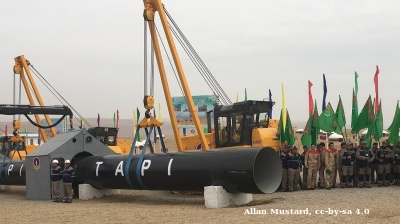In a region where coal continues to dominate the energy mix, Montenegrin Prime Minister Dusko Markovic’s announcement that plans to expand the Pljevlja coal-fired power station would be scrapped and the country would shift its focus to renewables investments was a significant step.
Montenegro, like most of the countries in the EU-aspiring region, derives a large share of its power from coal. Typically Montenegro produces around 40% of its energy from lignite; the figure is higher elsewhere.
Then on September 19, the day before a week of global strikes over climate change began, Serbia’s energy ministry announced the launch of the 104.5 MW Kovacica wind farm by Israel's Enlight Renewable Energy, the largest wind farm opened to date in the country.
This is welcome news in a region where serious questions have been raised not only over the environmental impact of a host of new power plants in a part of Europe where air pollution is already high, but also over their economic viability. Further questions surround whether EU accession candidates from the region will be able to meet emissions targets set for members of the bloc.
It seems to have been the question of economic viability that scuppered the Pljevlja power plant expansion, which had previously been among the Montenegrin government’s top priorities.
Podgorica cancelled a deal with Skoda Praha to build the new unit at the end of 2017 as the Czech company failed to find an investor after state-owned Czech Export Bank pulled out in 2016. The controversial project also precipitated Italian utility ASA’s exit as one of the two main shareholders in Montenegrin power utility EPCG alongside the Montenegrin government. A2A also had serious concerns over the viability of the project, and decided to exit EPCG before work started.
Since then the government in Podgorica has been searching for an alternative source of investment, such as potentially tapping into Chinese financing, before eventually scrapping the plants. “We have given up the valorisation of a large coal deposit in the Pljevlja area for the construction of the second thermal plant, although this is a large investment and brings a big number of jobs,” Markovic said.
He added that the government chose instead to invest in sustainable development and environment protection and is spending €50mn to upgrade areas that cause pollution. EPCG had already announced plans for an environmental upgrade of the existing Pljevlja power plant, which it said would extend Pljevlja’s life by 20 years and bring it into line with the EU’s environmental requirements. Montenegro hopes to become member of the bloc in 2025.
The project envisages construction of a desulphurisation system, denitrification system, improvement of the work of the electro filter and construction of a system for wastewater treatment. It will also invest €20mn in ecological reconstruction of the Maljevac ash and slag dump.
Among the critics of the Pljevlja expansion were the head of the Energy Community secretariat Janez Kopac, who called the project unprofitable and unnecessary in a 2018 interview with Montenegrin broadcaster RTCG.
Environmental pressure group Bankwatch has repeatedly warned that the second Pljevlja unit was among ten coal-fired power plant projects across the Western Balkans that are facing serious financial problems as they have not taken carbon costs properly into account.
“Although it's taken a while, Montenegro is the first Western Balkan government to cancel a new planned coal plant and deserves recognition for this. It should serve as an example to its neighbours Bosnia and Herzegovina, Serbia and Kosovo, who are still persisting with coal plans which are neither environmentally nor economically justified,” said Pippa Gallop of Bankwatch in comments emailed to bne IntelliNews.
Polluting Europe
Elsewhere in the Western Balkans, coal accounts for almost all of the electricity produced in Kosovo, around 70% of the total in Serbia and over half in Bosnia & Herzegovina and North Macedonia. Albania is the only exception, producing virtually all of its electricity from hydropower.
The reliance on coal — often from ageing power plants — has implications far beyond the region, as shown in a study from the environmental NGO Health and Environment Alliance (HEAL) that found 16 out-dated coal-fired plants in the six Western Balkan states are a public health and economic liability for the whole continent, with people in EU countries bearing the majority of the health impacts and costs.
The report noted that eight of the ten top polluters in terms of sulphur dioxide (SO2) emissions in Europe are located in the Western Balkans with the worst offender being Serbia’s Kostolac B with 128,000 tonnes of SO2 emissions in 2016, followed by Bosnia’s Ugljevik.
Not only that, but there are plans to build new coal fired power plants across the region, even though this will make it more difficult for Western Balkans countries to meet renewable energy generation and emissions reduction targets.
Turning away from coal
As the Montenegrin government experienced with Pljevlja, raising finance for new coal fired power plants is increasingly difficult. International development banks made d decisive move away from funding for coal power at the end of last year.
Among the major lenders to the region, in 2018, the European Bank for Reconstruction and development adopted a new energy sector strategy which, it said, “closes [the] door on financing of thermal coal mining and coal-fired electricity generation”. The bank stressed its position as the largest investor in the renewable energy industry in the region where it operates.
The World Bank has made a similar move away from coal and said in October 2018 that it will not support the planned 500 MW Kosova e Re coal power plant in Kosovo, that Pristina wants to build to replace the much older Kosova-A power plant that is one of Europe’s dirtiest and largely responsible for the poor air quality in the Kosovan capital.
Instead, countries in the region that are looking to build new coal power plants are looking to Chinese finance, and Chinese engineering companies and state banks have in many cases been happy to oblige. This has brought its own problems, however, for example in the spat between the Bosnian Federation’s authorities and EU officials over the state guarantee for the planned Tuzla power plant expansion.
Renewables investment gathers pace
There have been efforts to invest into renewables in countries across the Western Balkans, but these have been mixed, says Gallop. "What we see now in the region is that Montenegro and North Macedonia are starting to speed up with introducing renewables and gradually turning away from coal, while Bosnia and Herzegovina, Serbia and Kosovo are still concentrating on coal and seeing renewables mainly as a side-salad, so indeed there are some changes,” she told bne IntelliNews.
A couple of weeks before Markovic announced the government’s change of stance on Pljevlja, EPCG shareholders approved plans to build the company’s first wind farm in an investment estimated at €58mn. Plans to build a solar plant near Podgorica are also underway.
North Macedonia has the dubious distinction of being home to two cities with some of the worst air pollution in Europe, the capital Skopje and Tetovo, home of the Jugohrom Ferroalloys plant. This has given a strong incentive for investment into renewables. The country’s first wind farm at Bogdanci opened in 2015, and there are now plans for an expansion. Meanwhile, state-owned power company ELEM is preparing to build a 10MW solar power project.
And while, coal may still be king in other Western Balkans countries, renewables investments are still going ahead.
In Serbia, Enlight’s new Kovacica wind farm together with the Cibuk wind farm — both funded by the EBRD — are set to reduce the country’s carbon dioxide emissions by over 600,000 tonnes per year, the development bank said in April. Looking ahead, Fintel Energija, the Serbian subsidiary of Italy's Fintel Energia Group, said that it plans to start the construction of Europe's largest wind farm in Serbia in 2019.
Bosnian utility Elektroprivreda BiH (EPBiH) has made construction of the Podvelezje wind park one of its priorities along with two hydropower plants, while German renewable energy company Wpd, plans to invest €1.2bn in the construction of a wind farm across the border region between Bosnia and Croatia. The authorities in Bosnia’s smaller entity Republika Srpska have, however, been criticised for their decision to halt incentives for wind farms.
A policy rethink ahead
As the Western Balkans countries progress towards EU accession — the primary political goal for countries across the region — they are having to rethink their energy policies to bring them into line with those of the EU. This includes reducing emissions and increasing renewable energy generation. For some countries such as Albania, which generates almost all of its energy from hydropower, this is less of an issue. For others, there are some major policy changes ahead.
In particular, there is the question of subsidies for coal power. The director of the Energy Community secretariat Janez Kopac famously said earlier this year that if the countries of the Western Balkans were to join the EU tomorrow, all coal-fired power plants in the region would go immediately bankrupt. His comment was based on a new study by the Energy Community that found Bosnia, Kosovo and Serbia paid €444mn in direct subsidies to coal-fired power plants in 2015-2017, nearly three times higher than those for producers of energy from renewable sources.
Features

BEYOND THE BOSPORUS: Espionage claims thrown at Imamoglu mean relief at dismissal of CHP court case is short-lived
Wife of Erdogan opponent mocks regime, saying it is also alleged that her husband “set Rome on fire”. Demands investigation.

Turkmenistan’s TAPI gas pipeline takes off
Turkmenistan's 1,800km TAPI gas pipeline breaks ground after 30 years with first 14km completed into Afghanistan, aiming to deliver 33bcm annually to Pakistan and India by 2027 despite geopolitical hurdles.

Looking back: Prabowo’s first year of populism, growth, and the pursuit of sovereignty
His administration, which began with a promise of pragmatic reform and continuity, has in recent months leaned heavily on populist and interventionist economic policies.

Emerging Europe’s growth holds up but risks loom, says wiiw
Fiscal fragility, weakening industrial demand from Germany, and the prolonged fallout from Russia’s war in Ukraine threaten to undermine growth momentum in parts of the region.



